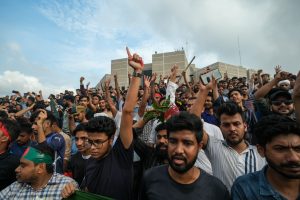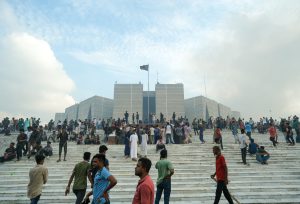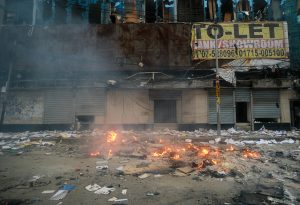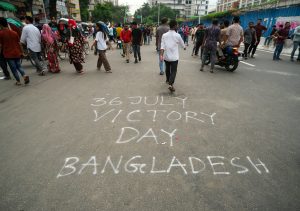A news ticker scrolled across Bangladesh’s TV channels at around 11 a.m. on August 5, amid a complete internet blackout, announcing that Bangladesh Army Chief Waker-uz-Zaman would address the nation at 2 pm. A palpable sense of anticipation gripped the people. The return of internet connectivity at 1:30 p.m. only heightened the certainty of a seismic shift in power.
Sheikh Hasina, the once unassailable leader, criticized for her autocratic governance, seemed on the brink of downfall. Media outlets reported thousands of people from all classes converging on Ganabhaban, the prime minister’s residence, their chants of dissent echoing with a mixture of jubilation and scorn.
The capital, along with the entire nation, resonated with slogans as the air became charged with a sense of freedom. The student-led quota protest movement, which had swelled into a mass uprising following the tragic loss of over 300 lives, appeared to have achieved its aim of national salvation.
By approximately 1:45 p.m., Sheikh Hasina, accompanied by her sister Sheikh Rehena, departed from the Tejgaon military airport via a Bangladesh Army helicopter. She sought refuge in India, initially landing in Agartala before relocating to a secure residence in Uttar Pradesh, leaving behind a party in disarray from grassroots to metropolitan echelons.
As the masses began to infiltrate Ganabhaban and the National Parliament House around 3 pm., the military personnel commenced a strategic withdrawal in the face of an overwhelming tide of protesters.
Simultaneously, a wave of violence swept across the country, targeting leaders of Hasina’s Awami League party. Reports emerged of Bangladesh National Party and Jamaat-e-Islami affiliates perpetrating fatal attacks and ransacking the homes of AL members. This surge of unrest cast a shadow over the students who had stood against the recently toppled regime, as the destruction reached historical monuments, including the desecration of Bangabandhu Sheikh Mujibur Rahman’s sculpture, a symbol of the nation’s heritage.
These images provide glimpses of Dhaka amid the mix of chaos, unrest, and jubilation following Hasina’s departure.


















































